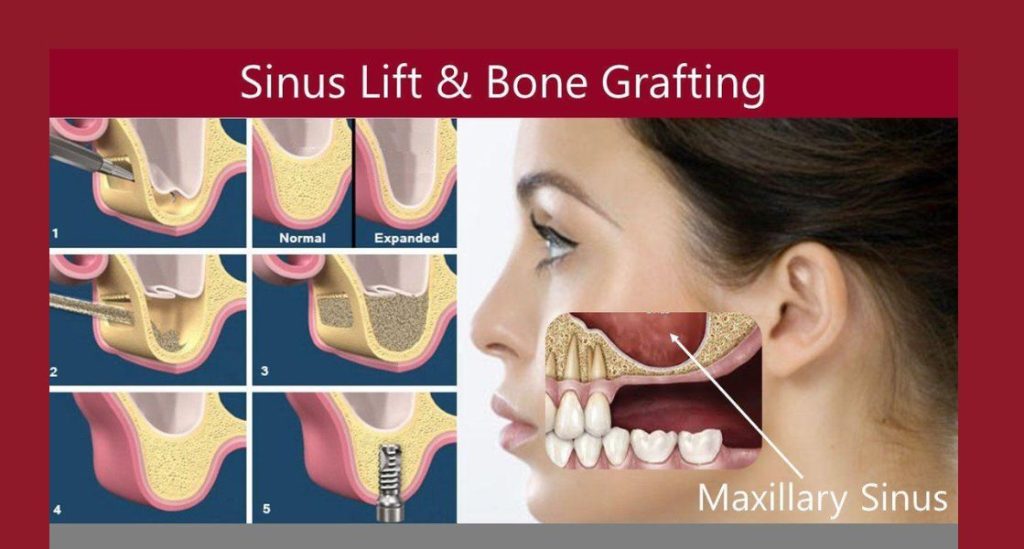Dental implants are substituted teeth surgically placed in the jaw to improve a person’s look or chewing abilities. They offer support for dentures, dental crowns, and dental bridges instead of real teeth.
Do You Want Dental Implants?
Are you tired of dealing with missing teeth? Schedule a consultation with our experienced dentists to explore your options and learn more about the benefits of dental implants.
Book Your Appointment NowWorking on Dental Implants

Dental implants are an innovative way of replacing lost teeth. These titanium screws act as strong anchors for the artificial teeth since they are surgically placed into the jawbone. Numerous people have had their happiness and confidence restored by this ground-breaking technique.
Types of Dental Implants
You can choose from three typical forms of dental implants: Zygomatic, Subperiosteal, and Endosteal. The most common and safest is endosteal, followed by subperiosteal and zygomatic.
Endosteal Implants
The most prevalent kind of dental implants are endosteal implants. They work well for most patients, but the implant must fuse to a strong, healthy jawbone. They resemble screws and are placeholder posts. They implant into the jaw, where the prosthetic teeth are placed.
Healing takes a little while after the treatment. It takes time for it to combine and form a stronghold. The artificial teeth can be attached to the supporting frame to blend in with the neighboring teeth after healing. The concept of the second most popular implant might appeal to you slightly more if you’re uncomfortable with the thought of having anything put within your jawbone.
Subperiosteal Implants
Subperiosteal implants are an additional kind of dental implant. The primary substitute for endosteal implants is this. Subperiosteal implants lay on top of the bone, under the gums, as opposed to being cemented into the jawbone.
A post is fastened to a metal frame positioned beneath the gum line. To keep the frame in place, the gum then heals around it. The poles that emerge from the gums hold the fake teeth in place. This process is only employed when a patient lacks sufficient jawbone to support an implant or prefers not to undergo extensive oral surgery to increase bone density in the affected location.
Zygomatic Implant
The least common kind of dental implants that you can get are zygomatic implants. It is the most difficult process and should be carried out only in cases where the patient’s jawbone is insufficient for the Endosteal implant. Instead of the patient’s jawbone, the implant is positioned in the cheekbone. The implantation of zygomatic implants necessitates sufficient expertise and surgical background.
Learn: how to fix gaps in teeth
Are Dental Implants Painful?

The answer is simple: your mouth is fully numbed throughout the treatment by either local or general anesthesia, it is not uncomfortable in and of itself. After dental implantation, the patient may experience slight pain once the numbness wears off. People who get the operation report that it hurts less than tooth extraction.
General Misconceptions
There are a few misconceptions regarding dental implants. So, let’s clarify the question of dental implant pain.
Even though placing dental implants is an intrusive surgery, skilled dentists may significantly reduce pain by using anesthesia. The treatment is more convenient thanks to newer technologies like digital implants, which further minimize the need for stitches.
Many people think that getting dental implants hurts. When weighed against most alternative tooth replacement options, implants are the most practical choice.
You might encounter some discomfort in the start, but over time, the pain will all vanish. Once bonded and cured, dental implants have the same sensation as your natural teeth. Since implants don’t include nerves, you won’t experience any sensation when biting or chewing food, even if you might feel the typical pressure. Dental implants are significantly easier to maintain and do not strain the gums like oral dentures do.

Patients experience almost no pain because of these advancements in anesthetic methods. For dental implant surgery, three different forms of anesthesia are typically employed.
These are the following:
- General Anesthesia: Your doctor can anesthetize your complete body with this kind of anesthesia. This indicates that you need to be made aware of the procedure being done.
- Local Anesthesia: Under this kind of anesthesia, you are completely conscious but won’t experience any discomfort during the procedure. It just makes the implant location numb.
- Oral Sedation: One hour before the operation, a pill form of the medication is administered. It is intended to induce extreme relaxation and drowsiness while maintaining consciousness.
Advanced 3D Technology Helps in Reducing Discomfort

The conventional method of placing dental implants involves cutting into the gums and utilizing free-hand procedures to insert the titanium post into your jawbone. Estimating the ideal location and angulation for the dental implants is part of it. After the implant is placed, the dentist will suture the area closed. This procedure sometimes necessitates a longer recovery period and is more intrusive.
Post Treatment Care is Necessary for Successful Recovery
Bruising and swelling in the vicinity of your implant are typical post-operative complications that may be uncomfortable. After a dental implant treatment, headaches or face pain might also happen. This is brought on by inflammation in specific jawbone or facial regions.
It is typical for individuals to feel uncomfortable following a dental implant operation. However, if you take the right measures to control your pain, including rest and adhering to your dentist’s postoperative care instructions, it shouldn’t last more than a few days.
How Long Does Dental Implant Recovery Take?
Recovery from dental implants usually takes a few months. Osseointegration, the process via which the implanted posts fuse with the jawbone, occurs now. Ensuring the stability and lifespan of dental implants is crucial.
Potential Drawbacks of Dental Implants
Even though dental implants have many benefits, there may be some disadvantages to be aware of. The following dental implant facts are accurate in Australia:
- Cost: Getting dental implants may need a large financial outlay. Australian patients need to budget for these expenses. But it’s important to remember that the advantages in the long run frequently exceed the costs upfront.
- Time: From the initial consultation to the last restoration, the dental implant procedure could take several months. Although there is a downside to this longer schedule, the outcomes are well worth the wait.
- Surgical Risks: Dental implant surgery has inherent risks, such as infection and complications, just like any other surgical operation. These hazards are negligible, though, particularly in Australia, where strict safety and hygiene regulations are observed.
Other Procedures That Could Be Necessary

Additional treatments are occasionally required as part of the dental implants. These extra procedures are usually connected to the patient’s bone and oral health conditions. A sinus lift and a bone graft are two frequent add-on surgeries.
Bone Graft
When the patient’s jawbone isn’t thick enough or dense enough to hold the implant, a bone graft is needed. To reinforce the jawbone, this treatment involves either using synthetic materials or removing bone from another region of the body. Although it can be uncomfortable, patients must get the required care of their teeth and direction throughout the procedure, and the discomfort should be managed with medicine.
Sinus Lift
When the position of the sinuses in the upper jaw prevents the jaw from being sufficiently elevated to accommodate implants, a sinus lift is required. The sinus membrane is lifted during this treatment, and bone graft material is positioned underneath. Although there may be some slight discomfort, patients typically tolerate it well.


